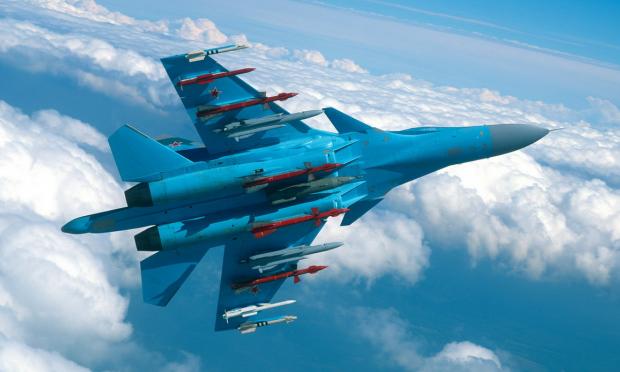United Aircraft Corporation (UAC, a division of state-owned technology giant Rostec) has delivered a new batch of Su-34 front-line bombers to the Russian Aerospace Forces.
The new Su-34 Fullback has extended combat capabilities, allowing it to use advanced air-launched munitions, expand the conditions and accuracy of bombing, and increase the range of ground and sea attack targets.
Recall that it is planned to create a special air force, which received the code name "Storm". This force, according to the data, will be designed to intervene in military operations of special importance. According to sources, the "Storm" will consist of three squadrons for different missions, consisting of Su-34 fighters, Su-24 and attack helicopters.
Russia has extensively deployed this aircraft in the ongoing war. According to the statement, Su-34 front-line bombers are an important part of the strike force of the Russian front-line air force.
Last week, two Russian Su-34 Fullback fighter-bombers were caught on camera dropping high-explosive bombs at very low altitude, near the border with Ukraine but inside mainland Russia. The bombs dropped by the Russian military aircraft were FAB-500Sh class high-explosive free-fall bombs intended for low-altitude deployment.
By all measures, the Su-34 Fullback fighter-bomber is an irreplaceable asset to the Russian Aerospace Forces (VKS), which the aircraft has proven with its performance in the ongoing war against Ukraine.
Along with the Su-35, the Su-34 is the most widespread combat aircraft along the front line. However, unlike the Su-35 fighter, the Su-34 is both a fighter and a bomber.
Deliveries of twin-engine two-seat Su-34s to Russia began in 2014. Based on the Sukhoi Su-27 Flanker air superiority fighter, the aircraft is designed for aerial warfare and bombing missions.
Due to the Su-34's unusual design and alignment with modern 4th generation fighter modifications, Russia poses distinct and potentially unmatched threats to its adversaries.
The Su-34, despite being a larger aircraft, is similar to Russian 4th generation aircraft such as the Su-27 and Su-35. Despite its enormous size, it can operate with cruise missiles and eight tons of precision bombs.

The Su-34's empty weight, as opposed to the Su-27's 36,000 pounds, is reported at nearly 50,000 pounds. The maximum takeoff weight of the Su-34 is just under 100,000 pounds, indicating that it can operate with more weapons than other fourth-generation fighters.
The aircraft is known as a fighter-bomber and yet it does not entirely fit either the fighter or bomber category by conventional measures and compared to the VKS arsenal aircraft.
The Su-34 is a unique aircraft for several reasons. First, it is a medium- to long-range bomber with the high payload and range of a fighter, as well as the duck-shaped fuselage (the aircraft is supposedly known as "Duckling" or "Duckbill" in the Russian military).
This is due, in part, to the Su-34's three-surface construction. Two canard lift surfaces that close behind the cockpit contribute to lift and aid maneuverability in addition to the wing and tail surfaces.

Since its speed is only specified as Mach 1.8, the aircraft would be more vulnerable than its much faster, lighter and more maneuverable competitors like the Su-27. However, it appears to introduce anti-aircraft capabilities not generally found in bombers.
The Su-34 could transition from air-to-ground attacks to higher-altitude precision bombing campaigns, reducing the total number of aircraft required for a given attack mission. This type of dual role capability undoubtedly expands business options.
This expands and streamlines the mission area, especially in scenarios where Russia may have an air superiority advantage and fewer Su-27s are required. An Su-34 could perform both air combat and ground attack missions in this type of scenario, while introducing glide and precision bombing capabilities to a greater degree.

In contrast, the B1-B bomber does not operate with fighter-like capabilities, and the B-2 and B-52 are strictly bomber platforms.
US 4th and 5th generation fighter jets, including the F-35 and F-15, can also perform effective "bombing" missions with precision weapons, albeit to a lesser extent.
This raises the question that the Russian Su-34, while introducing potentially unparalleled flexibility, could be a "stuck" aircraft between missions. This means that it is too large and heavy to be truly effective as a fighter, but too small to have sufficient impact as a bomber.



